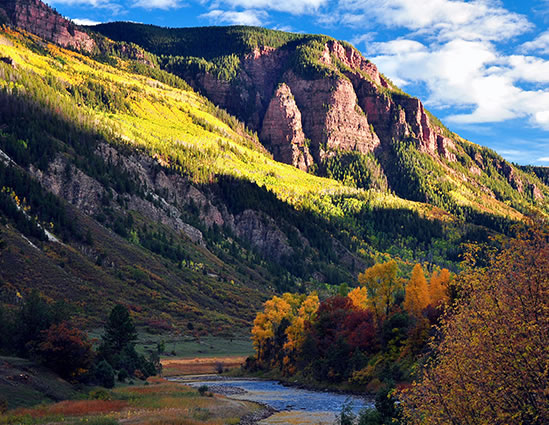The Crystal River watershed provides critical habitat for fish and wildlife, as well as water essential for both local agricultural and municipal uses. The river system is home to cutthroat trout, Bald Eagles, Lewis’s Woodpeckers and rare plant species, and draws anglers, kayakers and sightseers from around the world. Because of the free-flowing river’s scenic, historic and recreational values, the U.S. Forest Service has found the upper Crystal River eligible for federal Wild and Scenic River designation. Interest in protecting the watershed and its consumptive and non-consumptive water uses has recently grown due to a variety of factors, including the addition of the Crystal River to America’s ‘Most Endangered Rivers’ list (by American Rivers in 2012), work being conducted on the Colorado Water Plan, and recent drought conditions.
Beginning in 2013, Roaring Fork Conservancy partnered with Pubic Counsel of the Rockies and Lotic Hydrological, to produce the Crystal River Management Plan. The Crystal River Management Plan utilizes a science-based and stakeholder-centered approach to consider complex interactions between the physical components driving watershed structure; the biological components of riverine ecosystems; the social context of competing perspectives, needs, and values; and the existing legal and administrative frameworks governing water use in an effort to identify and evaluate management and structural alternatives that honor local agricultural heritage, preserve existing water uses, and enhance the ecological integrity of the river. A series of stakeholder meetings held throughout the planning process served to clarify outstanding questions, summarize results from previous studies, refine planning goals and objectives, and evaluate the feasibility of various management alternatives.

